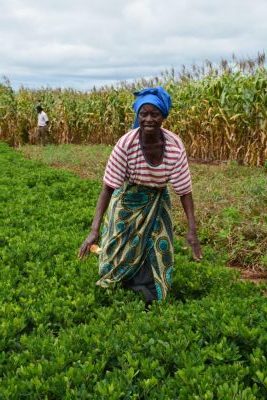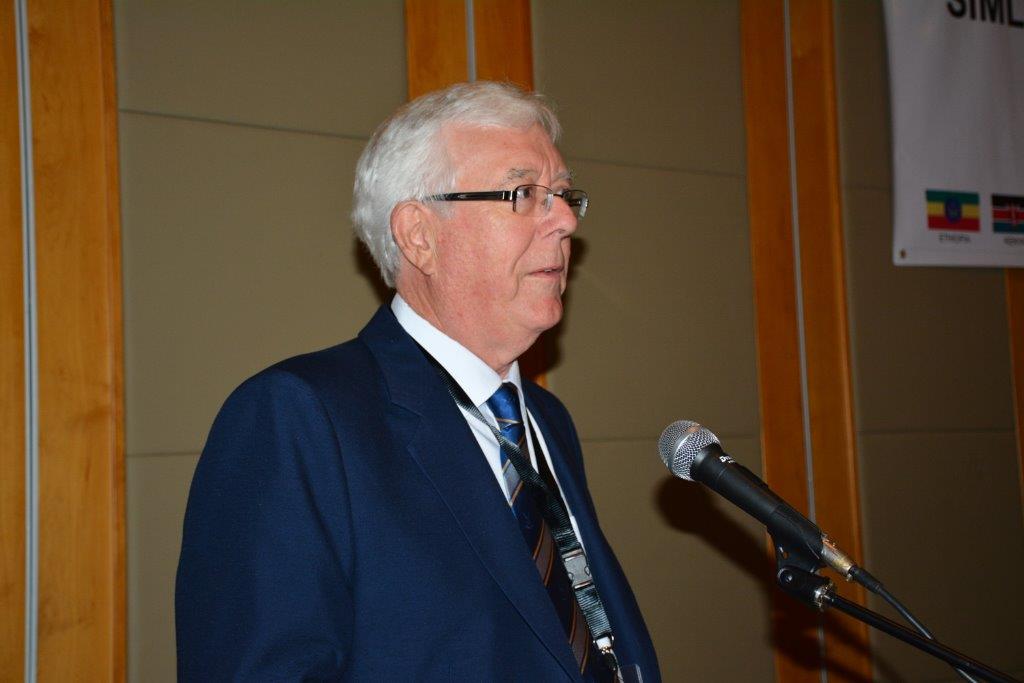
HARARE, Zimbabwe (CIMMYT) — A recent gathering of more than 60 researchers and representatives of donors, seed companies, national agricultural research systems (NARS), and non-governmental organizations from Africa and Australia, led to strategic discussions about the Sustainable Intensification of Maize and Legume Systems for Food Security in Eastern and Southern Africa (SIMLESA) program.
Delegates gathered in Malawi’s capital, Lilongwe, for the sixth SIMLESA annual review and planning meeting to discuss the project’s progress and achievements, share lessons learned over the past six years, and deliberate over potential improvements for implementing activities in the project’s final two years.
“The SIMLESA project has targeted increasing farm-level food security and productivity in the context of climate risk and change,” said Bright Kumwembe, principal secretary of Malawi’s Ministry of Agriculture and Food Security, speaking on behalf of the minister. “The program has become a model to many regional and sub-regional collaborative projects that address agricultural intensification. In this respect, the challenge to NARS lies especially in developing technologies, information and knowledge that sustainably increase agricultural productivity and at the same time reduce down-side risks.”
As part of the meeting, participants visited three farmers in Kasungu District who are involved in on-farm trials assessing conventional farming practices, conservation agriculture with no herbicide application, conservation agriculture using herbicides and conservation agriculture including maize-legume crop rotations. Farmer Dyless Kasawala, was observed to have managed to improve soil fertility in her fields, increase her maize yield and improve food security in her household.
Farmers in the area are engaging in agro-processing activities, such as extracting oil from groundnuts, to add value to their farming enterprises.
Established in 2010 and funded by the Australian Centre for International Agricultural Research (ACIAR), SIMLESA has as its primary objective to improve food security for 650,000 small farming households by increasing food production and incomes of vulnerable farmers with commercial viability by 2023. Ongoing SIMLESA Phase II activities will conclude in June 2018.
“The Program Steering Committee (PSC) recognizes the hard work of all participants and especially the dedicated scientists in the national programs. SIMLESA is on track to deliver significant impacts in the next two years, “said Eric Craswell, committee co-chair.
Delegates discussed the favorable Mid-Term Review (MTR) conducted last year. “SIMLESA I and II is a complex program with many partner countries, agencies, science disciplines, and objectives. Despite that complexity, the MTR found the program on the whole to be well-managed by CIMMYT, and the NARS partners had a strong sense of ownership of the program. It was very evident that the whole SIMLESA team is determined to meet the objectives of the program, to contribute and to work as a team,” Craswell said.
Mulugetta Mekuria, SIMLESA project leader, highlighted the 2015 MTR recommendations, which indicate that SIMLESA should rebalance plans and activities of all program objectives and various program-wide themes; ensure that the science which underpins the development of sustainable intensification packages and policy dialogue is completed and published in extension reports and peer-reviewed literature; and refocus its monitoring and evaluation processes, communication plans and gender activities.
To achieve these changes, each country and the program as a whole should prepare, within the approved budget, a revised work plan extending to the end of SIMLESA II. The program would then be able to make an informed decision on what to prioritize and what needs to be phased out, Mekuria said.
Participants discussed key issues in phase II, related to MTR recommendations, concluding that the goals should include:
- consolidating activities during the 2016-2018 period, with no new activities implemented during the remaining life of the program
- documenting scientific outputs for all the research conducted and synthesize the lessons learned
- streamlining logframe activities and developing a revised work plan
- scaling-out available technologies in collaboration with partners; and
- redesigning the project’s livestock component to align it with SIMLESA objectives.

John Dixon, ACIAR principal advisor/research program manager, cropping systems and economics, said the 2015 SIMLESA review had highlighted the commitment to the program by national partners.
“This gives us the opportunity to rebalance plans, focus on areas that can be brought together and synthesize results,” Dixon said. “Now is the time to scale-up by taking our research to farmers through extension, non-governmental organizations and farmers’ associations – moving from doing, to handing over the research.”
 Capacity development
Capacity development 
